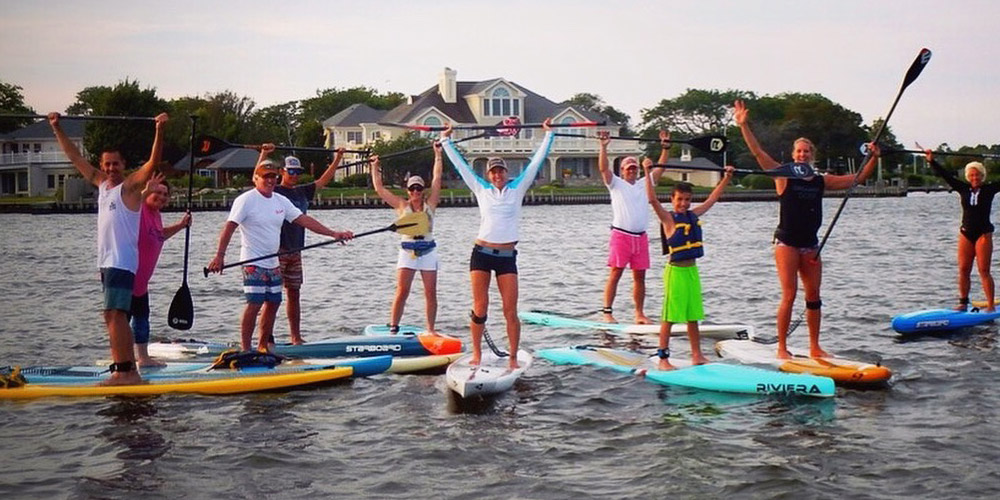
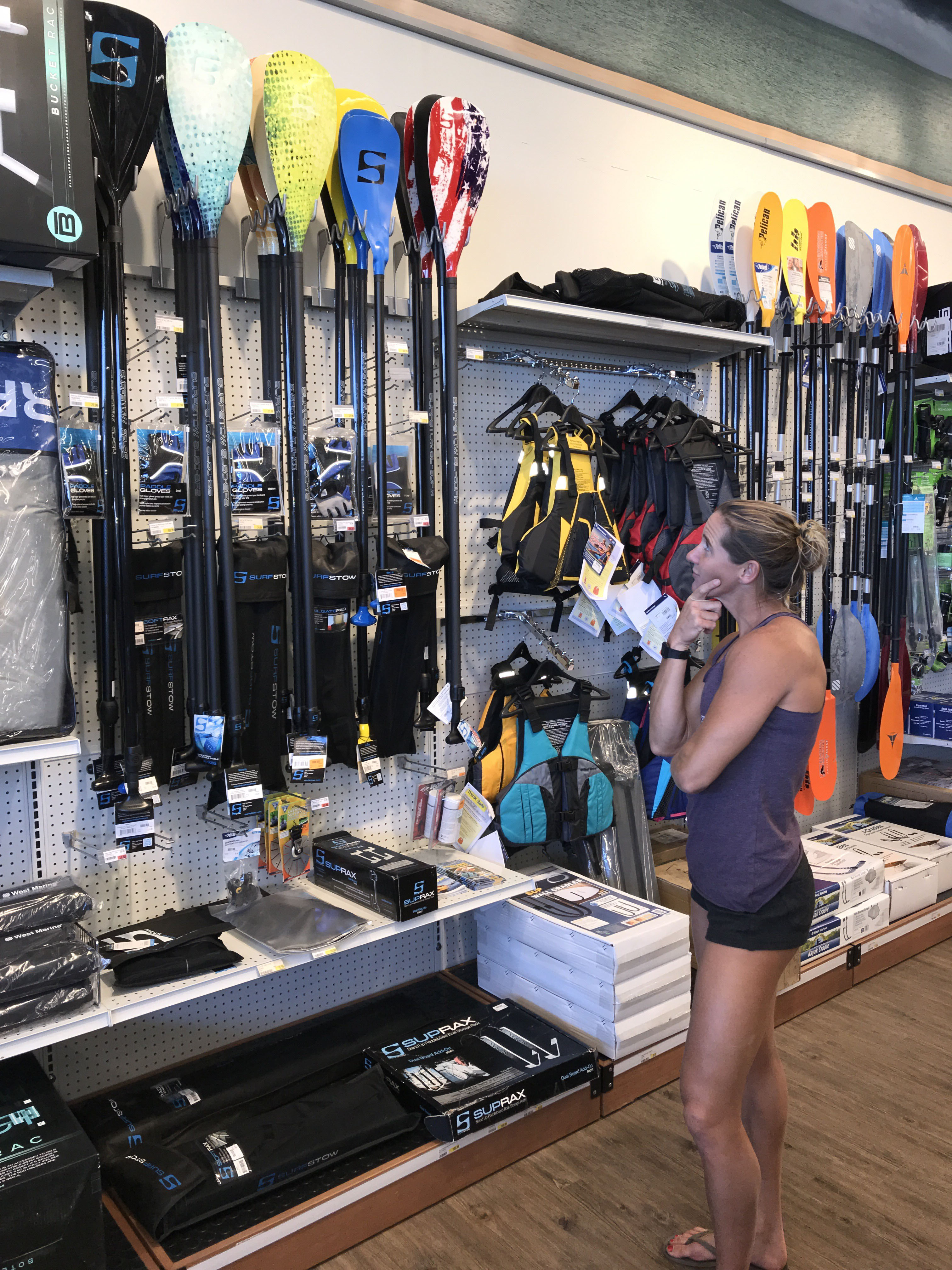
Hmmmmm, which one should I get?
If you are the proud owner of a spanking new SUP and are in the market for a paddle, don’t purchase the least expensive or first paddle that you see. This is because paddles, like the boards themselves, are not all created equal. This article will help acquaint you with the different types and styles of paddles on the market and why you would consider each of them.
When shopping for a paddle, you will need to select between an adjustable-shaft, fixed-length or a three-piece paddle. Paddles can be made of aluminum, plastic, wood, fiberglass or carbon fiber.
Adjustable-Shaft Paddles
The shaft of a SUP paddle is the long, straight part of the paddle between the handle and the blade. Adjustable shafts enable a paddle's length to be changed according the height of the paddler using it. A big benefit of adjustable paddles is that they can be shared among multiple users, such as family and friends. The adjusting mechanism adds a slight amount of weight and bulk to the paddle shaft and requires some minor maintenance and proper care to keep performing optimally. A thorough fresh water rinse after each use goes a long way.
Fixed-Length Paddles
Fixed-length paddles cannot be adjusted. Instead, the paddle's shaft is cut to the length required to meet the needs of its owner. The cutting process involves cutting the shaft to the desired length and then gluing on the handle, usually with a five-minute, two-part epoxy. The benefits of a fixed length shaft are reduced weight, a streamlined shaft, reduced wear and tear on your paddle and ease of maintenance. Even though there are no moving parts, a fresh water rinse after each use is still a good idea. For how to determine the right length paddle for you, see Determine Your Best Paddle Length for SUP.
Three-Piece Paddles
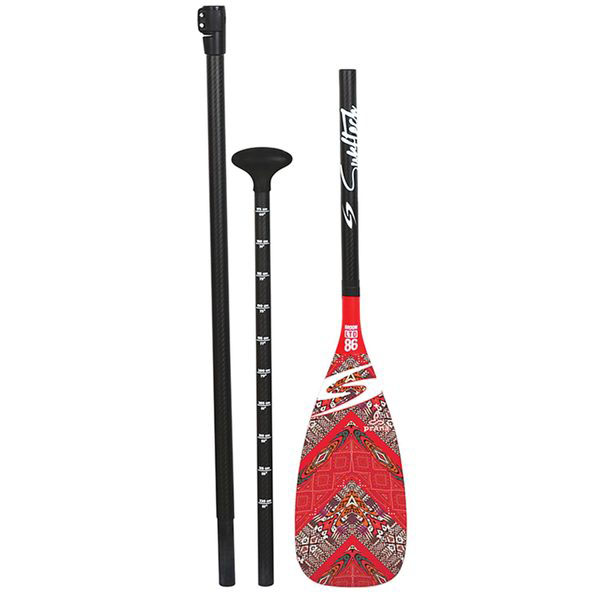
Three-piece paddles are adjustable for length, easy to stow and a smart choice for air travel.
A third type of paddle shaft available is a three-piece paddle. These paddles can be broken down into three pieces for ease of storage and travel. Three-piece paddles are always adjustable and can easily fit inside an inflatable SUP bag or be checked on an airplane.
What about paddle weight?
When your board is floating in the water, you don't have to worry about how much it weighs. On the other hand, your paddle remains in your hands the entire time you are out adventuring. The lighter the paddle, the easier it will be on your arms to keep up a good stroke. When you pick up a paddle at the store, imagine holding that weight in your arms for one to two hours or however long you think you will be out paddling. Even a few ounces can make a difference over time.
What is the best type of paddle construction?
The material used to build a paddle makes a difference in how that paddle will perform and how much it weighs. The materials used to build paddles are aluminum, plastic, wood, fiberglass, and carbon fiber.
Aluminum
Aluminum paddles tend to be the least expensive, but are also the heaviest paddles to use. They do not provide any flexibility in the shaft and are therefore a poor choice for long paddles or for anyone with shoulder injuries.
Plastic
Plastic is frequently used in the construction of paddle blades. It is inexpensive, lightweight and great for when you know the paddle will be used on rocks and rough surfaces, like with a rental business. However, plastic is not the strongest of materials and does not provide a solid “catch” for you to pull your board through the water.
Wood
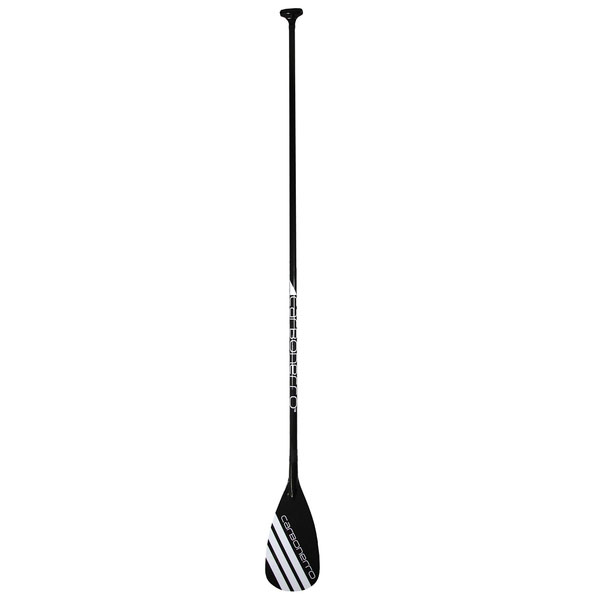
Lightweight carbon fiber paddles reduce fatigue but remember, most must be cut to length.
Wooden paddles are hard to find, can be quite heavy; but are often works of art that you can paddle. Special care needs to be taken to ensure that wooden paddles are not left out in the sun for long periods of time and that any repairs to the wood or finish are done immediately.
Fiberglass
Fiberglass is a lightweight material that is also fairly inexpensive. Paddle construction often combines a fiberglass shaft with another material such as a plastic blade. Fiberglass is a good middle ground material if you simply cannot decide.
Carbon Fiber
Carbon fiber is the lightest, strongest and best material used in paddle construction, but it is also the most expensive. If you like to paddle often and go long distances, a carbon fiber paddle is a worthwhile investment. If you are training to race your SUP, having one is a must.
Blade Size and Shape
Next take a look at the blade size and shape. All blades are more or less teardrop shaped, wider at the tip and tapered back to the shaft. Blades that are long and narrow are meant to feel less “heavy” on the pull, but need to be placed deeper in the water to be effective. Other blades, such as those that are short and fat, don’t have as far to go to be completely submerged in water, but will feel like you are pulling more weight. Unless you are a serious SUP racer, these are minor details. What is important however is the blade size. Most paddles are measured in square inches ranging between 75 and 100. For smaller paddlers, choose a smaller blade size and for larger paddlers, chose a larger blade size. For a paddle that will be shared among different size people, an 80 to 90 square inch blade is a good size.
What it’s all about . . .
I hope this helps you with your paddle decision. The most important thing is that you choose equipment that makes you feel comfortable, safe, and ready to go out and have some fun. That’s what this sport is all about.
About Myself
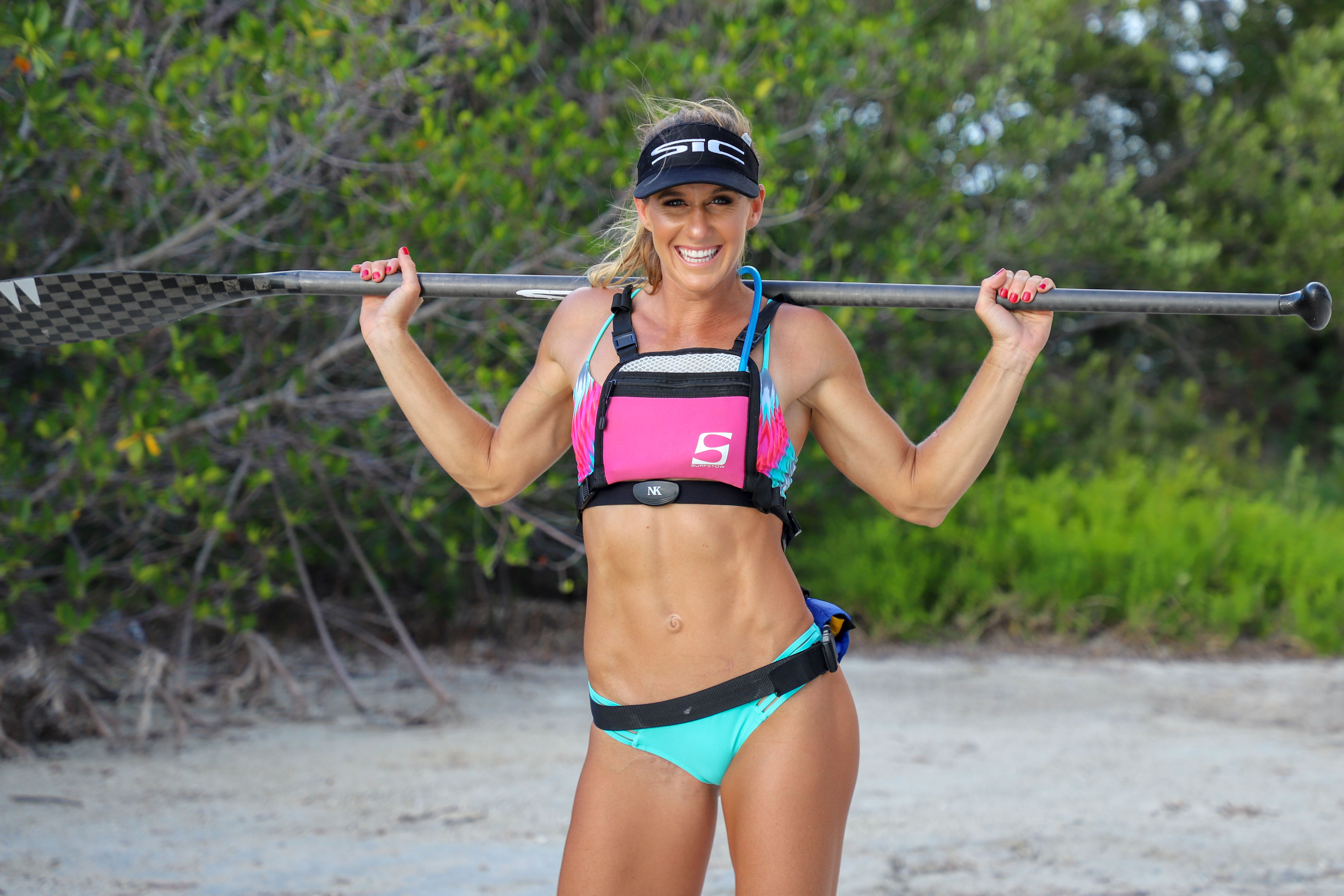
I was born and raised in the Florida Keys and have always had a deep connection to the water. I hold a USCG Masters license and for 8 years after school, I sailed around the world as a professional yachtsman. In 2013 I discovered stand-up paddling and moved back to Florida to pursue a career in this sport. With a lot of hard work and dedication, I am now a top 10 world ranked athlete, Guinness World Record holder for long distance*, and the 2016 Fastest Paddler on Earth. I am also a paddle coach, a registered yoga instructor and certified personal trainer. I offer clinics for all level paddlers. My classes and programs are a blend of the diverse coaches, styles and techniques I have practiced—and are a journey to cultivate strength, energy, endurance, balance, and bliss within our bodies. I am passionate about life, fitness, nutrition, love, and having fun. I believe that anything is possible and if you believe it, then it’s true.
*Editor's note: Seychelle paddled a total distance of 110.47 miles to set the female Guiness World Record for the greatest distance covered by a stand up paddleboard on flat water in 24 hours. She achieved this on December 5-6, 2015. Witnesses reported that at 5 am, fifteen hours into the attempt, Seychelle was singing as she passed the checkpoint. To learn more about Seychelle’s accomplishments as a competitor, SUP Yogi and adventurer, check out seychellesup.com.